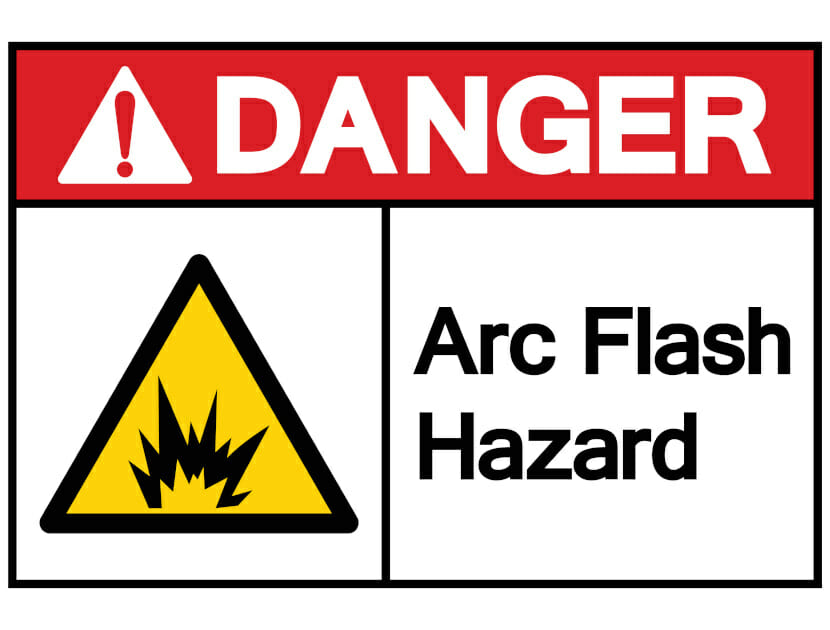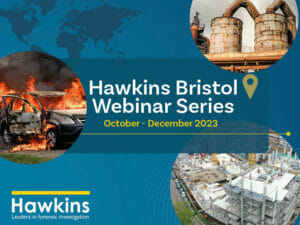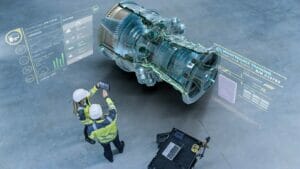WHAT IS ARC FLASH?
Arc flash, sometimes known as electrical flashover, is a low impedance short circuit that causes a very high current flow. This short circuit current can melt conductors, ionise (or electrically charge) the air and cause a metal plasma cloud that can explode away from the initiation point as an arc blast. Temperatures in this plasma can reach over 20,000° C, while the light of the arc is at best temporarily blinding, and the noise generated by such a blast has been recorded as being about 160dB. The combination of heat, light, noise and hot metal shrapnel makes the vicinity of an electrical arc flash an extremely dangerous place to be.
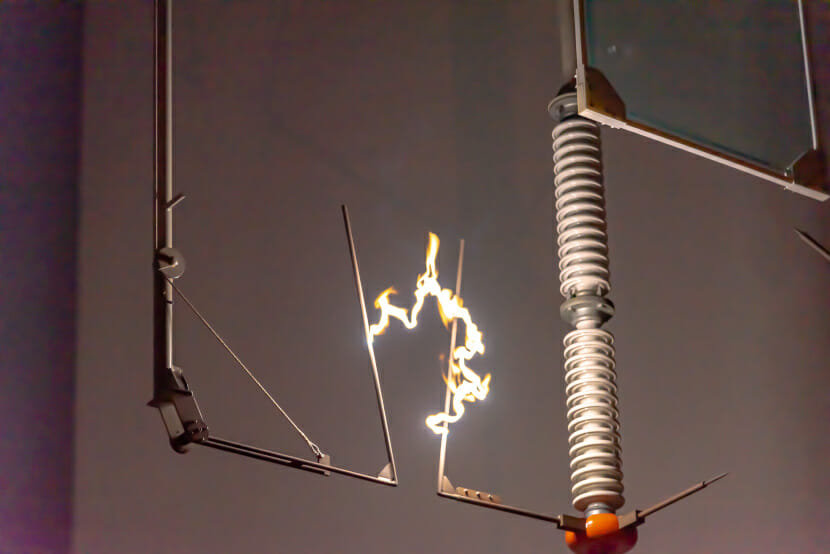
An arc can be created either by an equipment fault, a dropped tool, or by an inadvertent disturbance of components during work. Once initiated, an arc will sustain until its high current is detected by electrical protection devices higher up the supply path, which then operate to isolate the circuit. In medium and high voltage installations, this protection is usually high speed circuit breakers, but in lower voltage switchgear, the protection may be a slower acting fuse. This means, somewhat counter-intuitively, that low voltage switchgear (which is more frequently installed than high voltage, and in a wider variety of locations) can actually prove a much greater risk.
Employers, building owners, and electrical contractors all have a duty to understand the potential for arc flash in the electrical equipment for which they are responsible, as well as to protect both their employees and any other people who could be nearby at the time of an arc flash.
ARC FLASH PROTECTIVE EQUIPMENT
Whilst the most effective method for the reduction of risk from arc flash events is to restrict working access only to isolated and ‘dead’ switchgear, this is not practical in many scenarios. Switchgear may be mounted on the walls of working areas, where people would be regularly in proximity to the live equipment. Switching operations, equipment maintenance, and even meter reading inspections are all commonly performed in switch rooms, where not all of the equipment is isolated; in fact some of these works actually require the system to be live at the time.
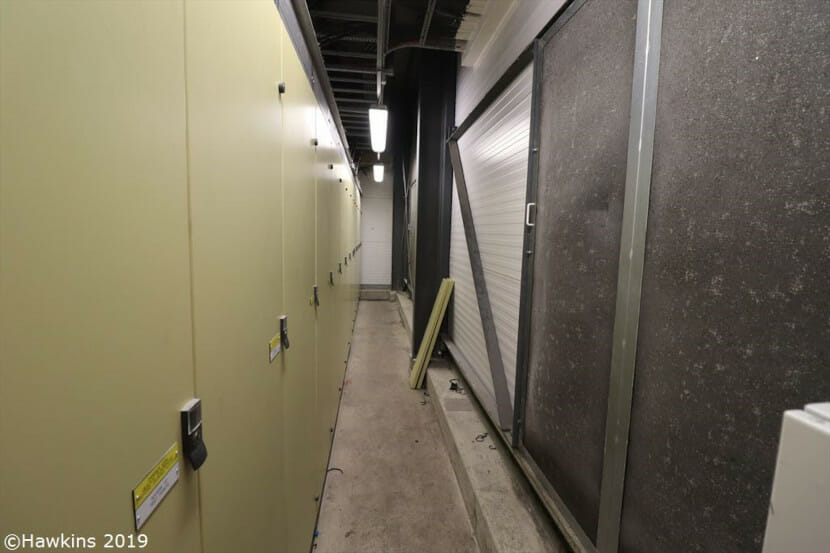
When employees are required to work on or in the vicinity of live switchgear, for example, when changing between grid supply and backup generators, or simply to turn off large pieces of equipment, an assessment must be made as to the level of protective equipment that may be required to ensure their safety. Equipment to protect against the consequences of arc flash falls into two categories: personal protective equipment (PPE) or flash-rated switchgear. The use of PPE against arc flash is the most widely used and common safety technique, but the correct selection is vital to ensure the appropriate level of protection.
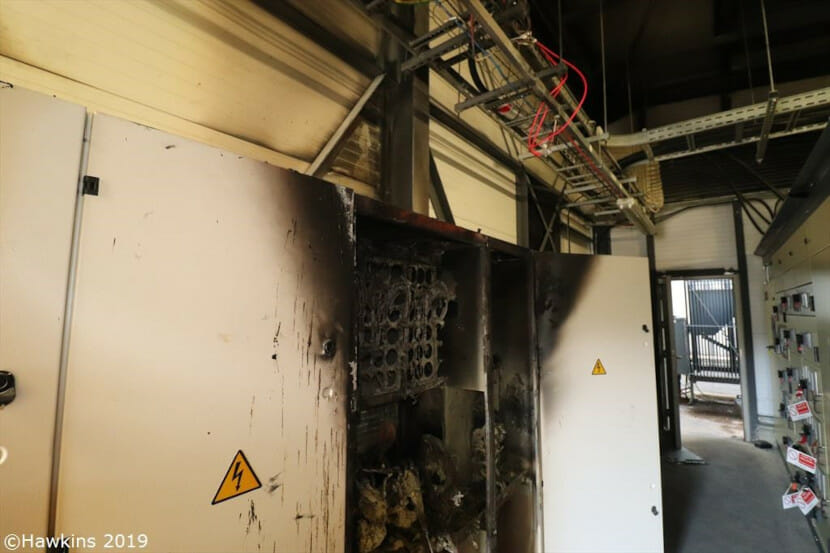
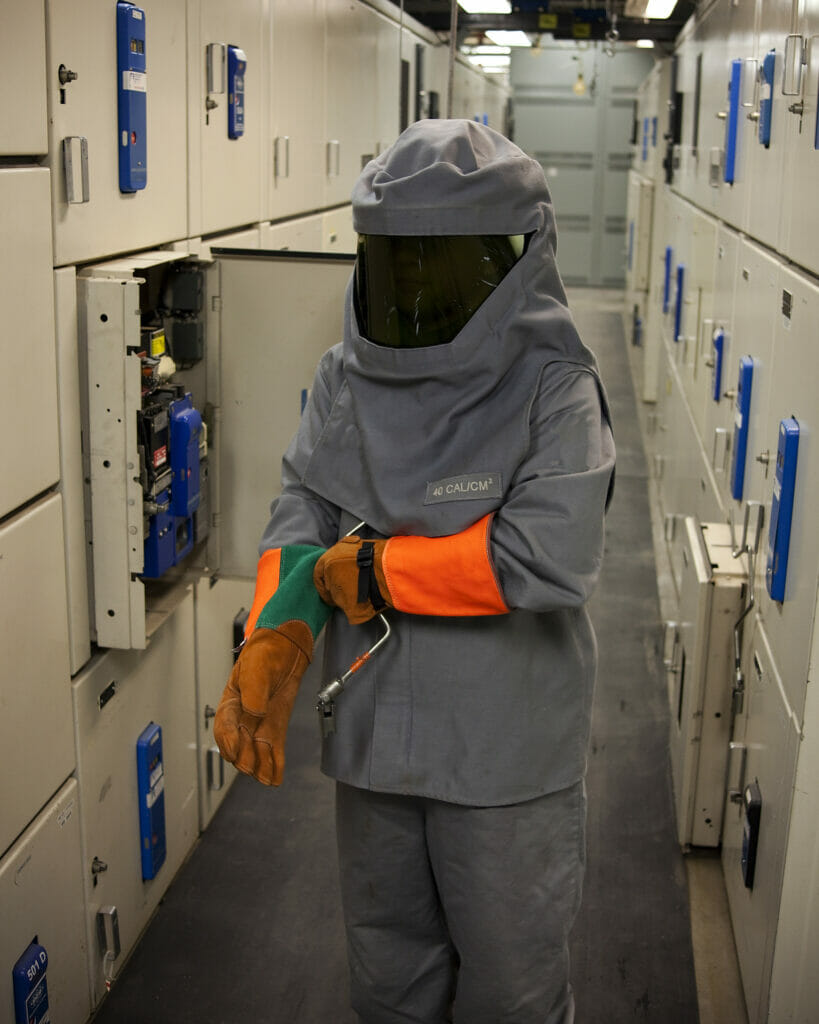
PPE can range from simple items, such as long sleeved clothing made from natural fibres, suitable for low risk situations, all the way to complex arc-resistant suits costing thousands of pounds; these suits are made of multiple layers of specialist materials and incorporate full head protection and gloves. These full ‘flash suits’ are heavy, cumbersome, hot to wear, and avoided wherever possible. To determine which PPE level is required for a situation, it is important to consider: the wider electrical system (through arc flash assessment); the nature of work that will be carried out near to the switchgear; and the design, age and maintenance history of the switchgear panels themselves.
Flash-rated switchgear is not commonly found in industrial applications in the UK, but is an option that can be considered. It is possible to design the panel or cubicle in which the electrical components are located such that the heat and pressure of any arc is deflected and directed into a safer area, commonly vertically upwards. Equipment designed in this way is heavier, often larger, and more expensive than conventional equipment, but provides significantly better protection than can be obtained through the use of PPE alone.
ARC FLASH ASSESSMENT
The practice of assessing arc flash for the determination of PPE requirements was first developed in the US petrochemicals industry, and has since been formalised into a standard process used by electrical engineers throughout the world. The basis of any arc flash assessment is a system fault level study combined with a protection grading study. The former provides the assessor with the level of current that will be present at any point in the system under study while the latter indicates which protection devices will operate, in which order, and at what speed, in order to isolate any particular fault.
Using the aforementioned studies, in a process described in the Guide for Performing Arc-Flash Hazard Calculations, or Institute of Electrical and Electronics Engineers (IEEE) Standard 1584, this data can then be used to calculate the incident energy for each item, which is a measure of the energy density received by a person standing at the standard operating position for the piece of equipment in question. By comparing this result with the PPE standards published in the Standard for Electrical Safety in the Workplace, or National Fire Protection Association (NFPA) 70E, then the appropriate arc flash protection PPE can be determined for operators approaching that piece of switchgear.
Arc energies are measured in calories per square-centimetre (cal/cm2). Roughly translated, holding a hand 2 or 3 cm above the naked flame of a candle for a second would result in around 1 cal/cm2 of incident energy, and it requires as little as 1.2 cal/cm2 of incident energy to result in second degree burns. Dedicated PPE begins to be required at category 1 arc flash risks, those with potential incident energies over
4 cal/cm2, and the requirements rise to category 4 equipment, which is rated for incident energies over 40 cal/cm2.
In situations when the incident energy is so high that suitable PPE is not available, or the required level of PPE is such that performing working tasks would be overly difficult, there is a significant risk of harm to the people near the equipment. At this point, either the electrical protection may need to be altered to reduce the energy of any potential arc, or the design of the electrical system may need to be revised in the most extreme cases.
ABOUT THE AUTHOR
Ben Lister is an electrical engineer with over a decade of experience working in electrical system analysis and design for power stations, transmission and distribution grids, and industrial applications. Since joining the Hawkins Leeds office, he has investigated electrical faults caused by equipment failure, by poor workmanship, and by substandard design.
